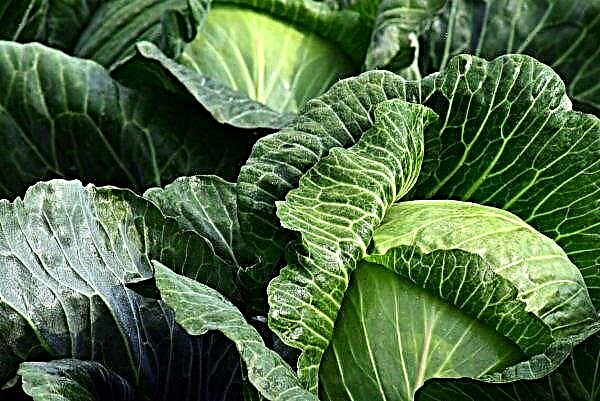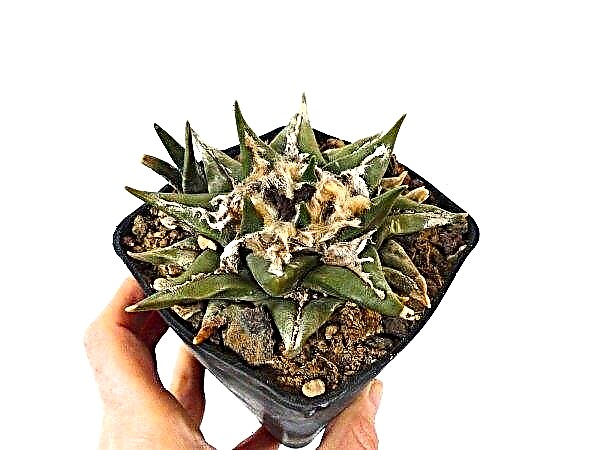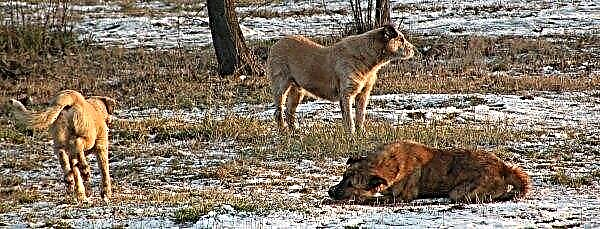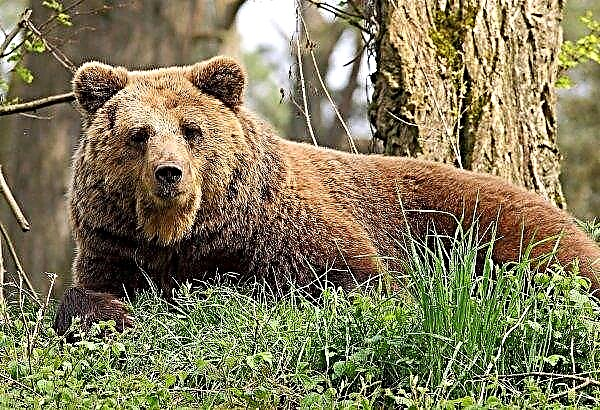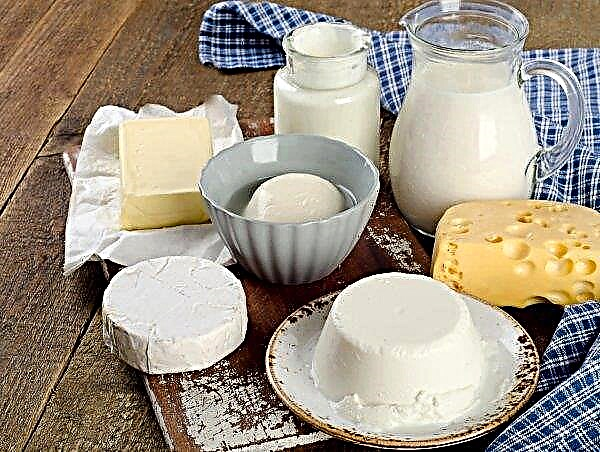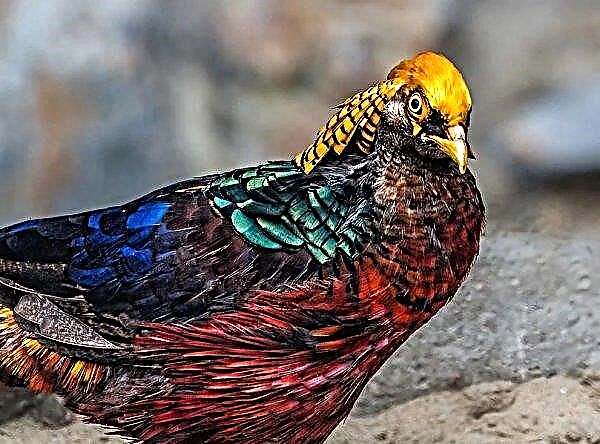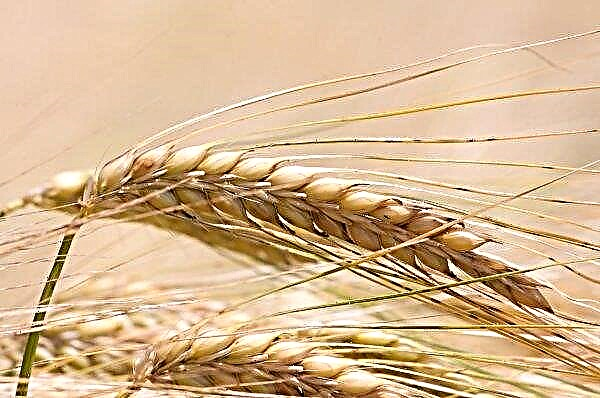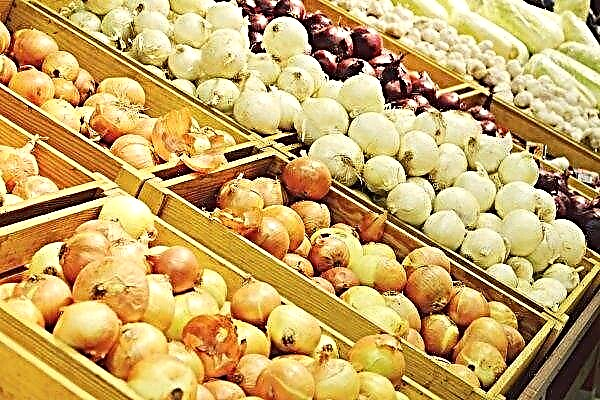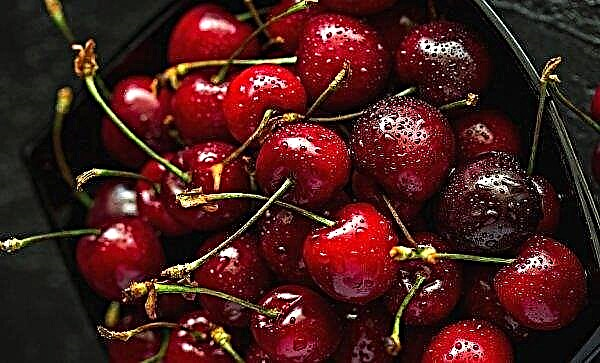For successful mating of cows with bulls, it is important to correctly determine the estrus time and choose the period when the animal is ready for pregnancy. At the same time, the herd should be improved by choosing the best insemination bull (or its sperm). Let's get acquainted with the signs of estrus in the burenki and their cycle, which should choose the bull and methods of insemination.
Signs of a cow hunting
The age at which a cow begins to have sex is affected by the breed. This can occur from the 8th to the 22nd month of life. In a matured female, estrus occurs approximately every three weeks until it becomes pregnant.
The behavior of the animal changes, and you can observe the following symptoms:
- an increase in the vulva and viscous discharge from it;
- the animal lifts its tail, giving access to its genitals;
- restless behavior, mooing, decreased productivity;
- when grazing, harassment and jumping onto other cows are observed, as well as tremors in the genital area;
- if there are other cows with estrus in the herd, then other cows jump onto it. As a result, the back of the animal will appear tousled and stained;
- when a bull grazes in a herd, flirting starts from the side of the male, but the cow may not immediately allow him to come to him. First, she will molest other females.
In most cases, the first mating in cows occurs no earlier than 15 months of life, but this also depends on the breed characteristics.
Sexual cycle
It is necessary to correctly separate the stages of the sexual cycle in cows.
Important! If a cow first started estrus, it is important not to allow a bull to go to it; therefore, cows and gobies are kept separately from the age of 6 months. Admitting a bull to a calf is optimal when it has gained about 70% of the weight of the norm for adults. Otherwise, it can adversely affect the course of pregnancy, the offspring, productivity and health of the animal itself.
| The name of the stage and its duration | External signs | Changes in the body |
| Excitation 3 to 5 days | Hunting (access to the male), estrus (mucus is secreted from the vulva). At this time, you can happen to a cow with a bull. | Additional layers of the epithelium appear in the vagina. Nuclear-free cells are found in the smear. Follicles mature in the ovarian tissue, followed by ovulation. |
| Braking Up to 3 days | The cow ceases to let the bull in and shows aggression to it. | There is involution of the uterus, rejection of the epithelium in the vagina and narrowing of the cervical canal. Yellow bodies develop, white blood cells predominate in the smear, and nuclear cells are also located. |
| Balancing up to 2 weeks | The cow is neutral to the bull. This attitude is called gray. | Closed cervical canal. Follicles begin to mature in the ovary; they contain the corpus luteum. In the smear, mucus and a small number of white blood cells are found. |
Important! Excitation can last for a cow for several days, but sexual hunting itself can take only a few hours, so the best time for mating is in the coming hours after detecting its signs.
The selection of the bull
Most bulls mature in about 8 months, but they are allowed to cows only in 1.5 years, when he will gain at least 70%.
When choosing a male inseminator, the following criteria are considered:
- kinship. A cow covered by a bull should not be his relative. Only distant kinship is allowed;
- exterior. A calf should be a typical representative of its breed without defects. He must have a strong constitution and outstanding parameters (usually choose the largest);
- pedigree. In his direct line of kinship there should be cows with good milk yield and bulls with excellent reproductive abilities. These data are taken from the tribal card. Bulls with poor heredity, even with excellent external parameters, are not used for breeding;
- high-quality offspring. If the bull has already grown offspring with high productive indicators, then the choice falls on him;
- high-quality sperm. The reproductive functions of a bull-calf are determined no earlier than he turns one year old. In this case, mating with cows is made and their success is determined, which should not be lower than 50%. Under equal conditions, choose the male with the largest number of conceptions. A sperm analysis can be performed in which the active sperm should be at least 75%.

Breeding methods
Now there are different ways of breeding cattle.
Did you know? The largest insemination bull named Repp lives in Ukraine in the Cherkasy breeding center and is a representative of the Podolsk breed. He walked up the weight of more than 1.5 tons in free keeping. About 50 thousand calves are received from him annually, but conception occurs artificially, since the bull has a bad temper.
Free breeding during grazing
Occurs during cattle grazing and is not particularly common on livestock farms. It is used in small private courtyards. With this method, the producer bull is in the pasture with the whole herd throughout the day, and at night it is taken. There are 30–40 cows per 1 male.
A bull-producer, when cows become sexually active, comes into contact with them and inseminates directly. If the male in the herd is alone, then he is given rest 1 day a week. It is recommended that the herd contain 2 males. They are released to the females in turn - one male replaces another after three days.
This method has several advantages:
- the sexual cycle does not go astray;
- days of sexual hunting are not skipped;
- a rather high percentage of fertility.
This method of reproduction has a number of disadvantages:
- hard to carry out tribal work;
- it is impossible to clearly plan pregnancy and calving;
- the percentage of sexually transmitted diseases is increasing.
 It should be noted that when inseminating in vivo, males and females are allowed only after a veterinary examination with the delivery of a certain list of tests. Gobies used for insemination must be inspected at least 1 time in 30 days.
It should be noted that when inseminating in vivo, males and females are allowed only after a veterinary examination with the delivery of a certain list of tests. Gobies used for insemination must be inspected at least 1 time in 30 days.Did you know? The insemination bulls provide excellent nutrition, including not only hay, silage, bran, vegetables and meal, but also fish oil, skim milk and blood meal. They are given vitamin and mineral supplements containing vitamins A, E, D, as well as manganese, zinc, copper and iodine. Stable walking is also provided.
Manual way
It has a number of advantages compared to free pairing:
- one male can inseminate more females;
- the term of its use for reproduction becomes longer;
- formation of parental pairs is possible;
- it becomes possible to take into account cases, planning the time of insemination and calving.
It is also carried out only for healthy individuals after appropriate examination by a veterinarian. The insemination bulls are kept separate from the cows and allowed only to those females who have begun the period of sexual hunting.
To carry out the process of mating, a special machine is used. The male during the process rests his front hooves on the racks on the sides of such a machine. This allows the body weight of the male during mating to move to the machine, and not to the heifer.
Each bull-producer is assigned a certain number of cows. At the onset of hunting, the female mates with the male. Before the process itself, the back of the case is washed and cleaned in the cows. At first, the male is carefully led to the female and gives them the opportunity to get used to each other - to sniff, experience excitement. Then mating is repeated after 10-15 hours. During the process itself, silence must be observed at the place of mating, there should be no strangers.
At first, the male is carefully led to the female and gives them the opportunity to get used to each other - to sniff, experience excitement. Then mating is repeated after 10-15 hours. During the process itself, silence must be observed at the place of mating, there should be no strangers.
One bull-producer inseminates about 160-200 cows during the year. The number of females for mating depends on the age of the male. Enough adult males are taken for mating no more than twice a day, one and a half year old gobies are used every 7 days, and at the age of 1.5 to 2.5 years no more than 2-3 males in 7 days.
Gobies, which are used for mating by hand every day, are given 1 day of rest per week. If a manufacturing bull makes 2-3 cages per day, then the next day is intended for rest.
When breeding cattle for meat, 30–45 cows are assigned to each bull-producer. After the mating process, the females are quickly taken away, and the male inseminator walks for several minutes.
Cooking method
Allows you to use valuable insemination bulls in the mating process, identify hunting, infertility and stimulate sexual function. With this method, cows with sexual hunting are placed in a fairly spacious cooking (fence) and a bull is brought there.
The male himself selects the female for mating without outside interference. The loads on the arbiter bull are the same as with the manual method. Gobies are kept separately from females and run into the brewing for 1-2 hours twice a day - in the morning and in the evening. Mating with this method takes place under the supervision of farm workers, who keep records of insemination and make sure that the cow, after two incidents, is taken out of the fence to avoid repeated incidents of males with the same female.
Mating with this method takes place under the supervision of farm workers, who keep records of insemination and make sure that the cow, after two incidents, is taken out of the fence to avoid repeated incidents of males with the same female.
Artificial insemination
This is the most common way, since it is the most convenient. It allows you to inseminate several cows with a single dose of bull sperm. Therefore, on large farms, when choosing artificial insemination, there is no need to keep a lot of males, just a couple of bulls.
Sperm is carefully checked before use, which helps prevent the occurrence of diseases transmitted through sexual contact (brucellosis, trichomoniasis and others).
Did you know? Sperm quality in bulls falls by the age of 14.
When choosing artificial insemination, the following recommendations should be observed: when entering, the seed should fall as close as possible to the cervix. A single dose of sperm for input should contain at least 10 million sperm in the active state.
Before carrying out such a procedure, it is necessary to inspect and study the localization of the vagina in cows that have already given birth. This is necessary due to the fact that folds already form on the walls of the uterus in those who have already given birth.
There are four methods of artificial insemination:
- Epicervical. They are used for never having given birth to cows because of the absence of folds on the uterus that arise after labor. This method involves introducing the seed optimally close to the cervix. It is closest to the natural fertilization process. The probability of conception with this method is 65–70%.
- Manocervical. Insemination is carried out with the control of the hand finding the vaginal opening. The success of this method reaches 65–70%.
- Visocervical. This method requires visual monitoring of the location of the cervix. For inspection, a mirror for the vaginal opening is used. The probability of conception with this method is 50-60%.
- Rectocervical. Insemination occurs with control through the rectum of the location of the cervix. This method is most effective, since sperm most accurately enters the cervical canal. The probability of conception is 70–75%.
 Artificial methods are most convenient, since in this case bulls for mating can not be kept on the farm, but simply purchase seed in the appropriate breeding institutions. This helps to improve the breed and helps to avoid crossbreeding among animals related to each other.
Artificial methods are most convenient, since in this case bulls for mating can not be kept on the farm, but simply purchase seed in the appropriate breeding institutions. This helps to improve the breed and helps to avoid crossbreeding among animals related to each other.The collected seed of breeding bulls is frozen and can be stored for several months.
Correct mating of cows will help to improve the herd and will not affect their productivity. At the same time, it is necessary to withstand the age when the animal grows stronger and can carry the calf without unpleasant consequences, as well as choose the right insemination. For a successful mating, it is important to immediately determine the onset of sexual hunting.

